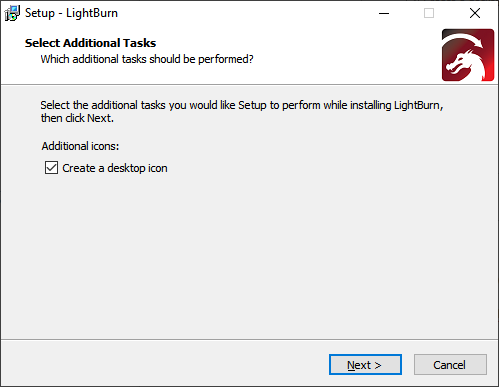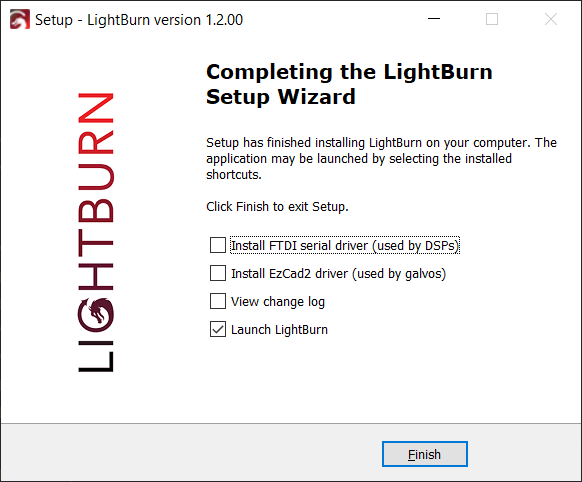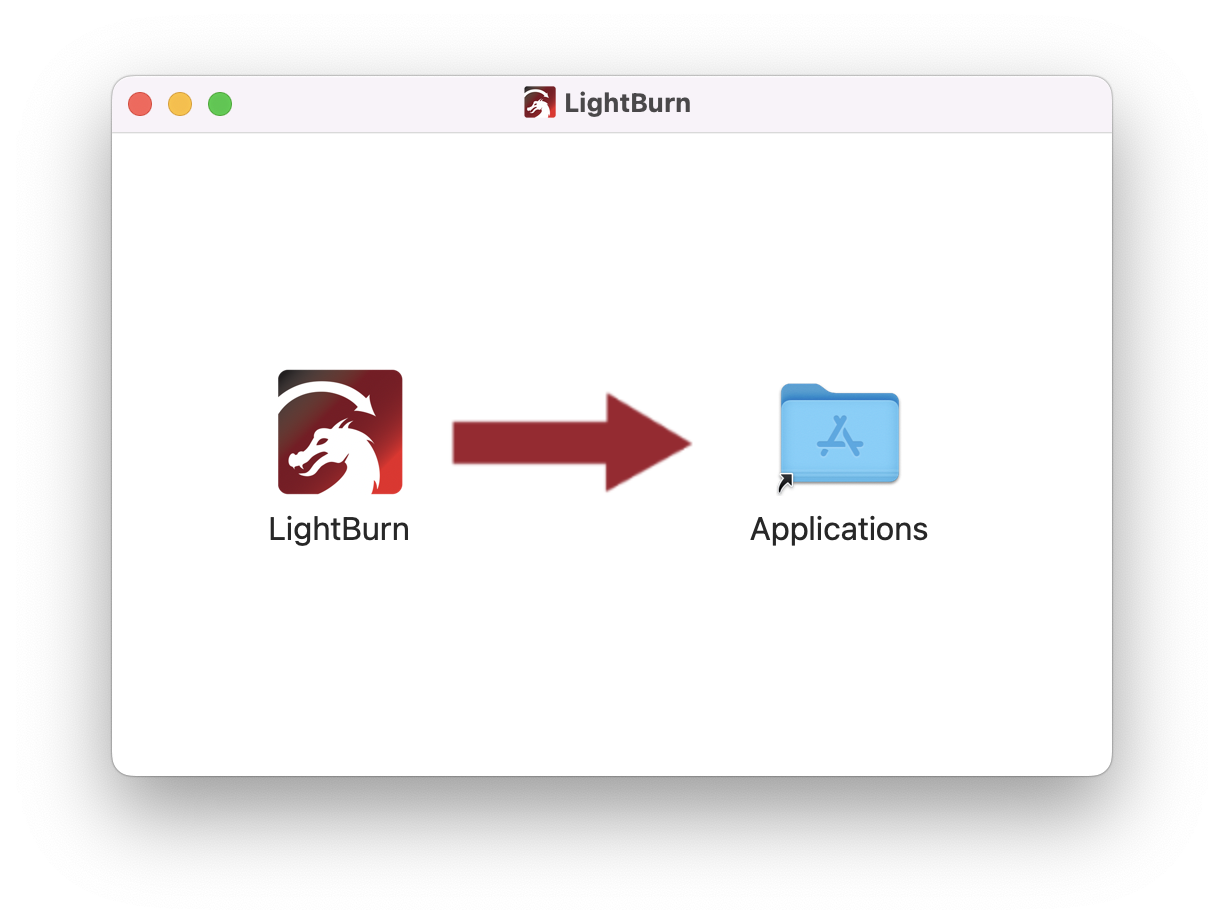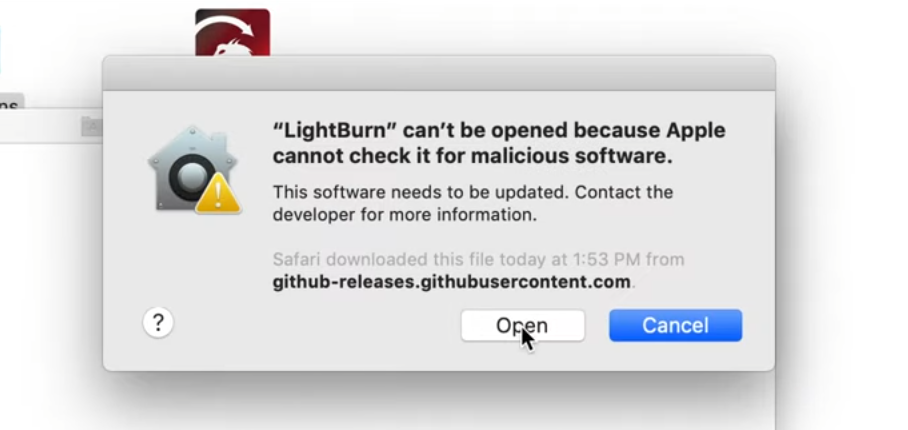Installation & Setup
Computer Requirements¶
LightBurn 1.6 runs on the following operating systems:
- 64-bit Windows 7.0 or later
- macOS 10.13 or later
- 64-bit Ubuntu Linux 20.04 or later
LightBurn does not require a powerful computer for most work, although more memory is helpful for designs with a lot of images. As with most things, a faster computer will make it easier to work with large images or complex graphics.
Support for older operating systems
Previous versions of LightBurn going back to version 0.6 are archived on our website.
- macOS users running versions older than 10.13 should download LightBurn 1.6.03, which supports macOS 10.11 or newer.
- Users limited to 32-bit versions of Windows should download LightBurn 1.5.06, which is the final 32-bit release of LightBurn.
- Ubuntu 18.04 users unable to upgrade to a more recent operating system should download LightBurn 1.2.01, which is the last release compatible with Ubuntu 18.04.
- LightBurn 1.7 will be the final LightBurn version available for Linux.
Download LightBurn¶
To ensure you get the most recent version of LightBurn, download LightBurn directly from the Download / Trial page at lightburnsoftware.com. On this page, you'll find links to download the current version of LightBurn, as well as links to previous versions of the software and public beta versions.
When you've completed the download, you should see the file in your "Downloads" folder or a manually selected folder.
Installation Directions¶
Choose your operating system below for additional installation help.
Launch the installer by double-clicking it. Windows may ask if you trust us first.
Click Next, then click Install. The installation will proceed. When it completes, you'll see this:
Installing Drivers
If you have never installed LightBurn on this computer before, you might need to install drivers. This is not necessary when updating an existing installation.
- The FTDI driver is mostly used by DSP controllers, like Ruida and TopWisdom.
- The EzCad2 driver is used by supported Galvo devices using EzCad2 boards.
That's it! Locate the LightBurn icon to launch the program.
Note
To install LightBurn on an ARM-based Mac (using an M1 chip or later), you must have Rosetta installed.
In most cases, Rosetta is automatically installed on ARM-based Macs, and manual installation is unnecessary. If Rosetta is not installed, you'll be prompted to install it when you attempt to open LightBurn.
Installing LightBurn on macOS is accomplished the same way as most macOS software. After downloading the DMG file, open the file (typically by double-clicking) and drag LightBurn into your Applications folder. As long as you have version 1.2.00 or later, LightBurn should be ready to use. If you're using an older version, please see the information below for an additional step you'll need to take.
Versions before 1.2.00 were not notarized to be recognized by your computer as coming from a trusted developer. If you installed an older version, you'll need to follow the steps below to allow your computer to run the software:
macOS Notarization Bypass Guide (fixing the 'unable to check it for malicious software' warning)
To Install the LightBurn application:
- Double-click the LightBurn.dmg file to mount the disk image
- Drag the LightBurn application into your applications folder
- Eject the LightBurn disk image, or drag it to the trash bin
When launching LightBurn for the first time:
- Open a Finder window
- Browse to the Applications folder
- Hold the Control key and click the LightBurn icon, or right-click or two-finger tap the icon
- Choose Open from the menu
- When macOS asks if it should open the program, say yes, and it will be listed as an exception in your launcher. From then on you can just launch the application normally.
LightBurn is tested on Ubuntu Linux, and releases through LightBurn 1.7.08 are officially supported on Ubuntu 20.04 and 22.04.
- Ubuntu 18.04 users unable to upgrade to a more recent version should download LightBurn 1.2.01, the last release compatible with their operating system.
- Ubuntu 20.04 users can use any of the installation methods described below.
- Ubuntu 22.04 users will need to use LightBurn's new AppImage installer.
Please see Linux Installation for more information.



